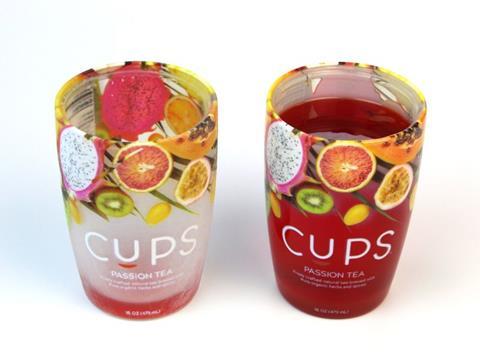
3D printing solutions provider Stratasys Ltd. has introduced its Stratasys PolyJet™ printing technology, which the company says designers can now use to model complex, full-colour packaging for cosmetics, beverages, consumer electronics, personal care, food, and more. These high-fidelity prototypes accurately simulate final packaging including realistic colour combinations, textures, transparency, and flexibility.
Traditional prototyping for consumer product packaging can be costly, time-consuming and leaves designers at the mercy of third-party production facilities. With PolyJet printing on the J8™ Prime, J7 Series and J55™ Prime™ series 3D printers, designers can produce complex, high-transparency, full-colour 3D packaging with integrated 2D graphics and labels all in one print. Using GrabCAD Print™ click-and-print workflows, prototypes go from on-screen simulated product to full 3D-printed samples in a day.
“Ultra-realistic models make the idea real for our clients, enabling an accelerated decision-making process. We are a long way from the bland all-white models we produced prior to 3D printing – today the possibilities are endless,” said Jeremy Garrard, director of market development, design and R&D for Quadpack, a global packaging provider headquartered in Barcelona, Spain. “Along with the work we do for our QLine range and our customers, the models we produce helps towards influencing and inspiring the industry. As an example, we printed over 500 pieces for #QPPackfuture, our annual trend report, in which the team presents its vision for the future of cosmetics packaging, complete with samples.”
The multi-material printing capabilities of the J-Series printers combined with VeroUltra™ materials gives designers the ability to print in over 640,000 unique colours, and simulate realistic textures like fabric and wood, as well create glass or plastic-like transparency with smooth color gradients. For example, VeroUltra material allows designers to print simulated glass bottles and add “labels” with sharp text and images that meet 2D graphics labeling standards. Furthermore, designers can incorporate simulated products or fillings, like cosmetics, makeup or liquids, for the ultimate in realistic rapid prototyping.
“Novelty is key in packaging, so designers want to create something that will allow their product to catch the consumer’s eye,” said Shamir Shoham, vice president of design for Stratasys. “With the ability to print glass and plastic-like transparency with high-contrast, sharp, bright graphics plus the ability to simulate liquid filling, designers are delivering realistic packaging prototypes that lead to earlier marketing assets as well as better and faster decision making by stakeholders.”




















